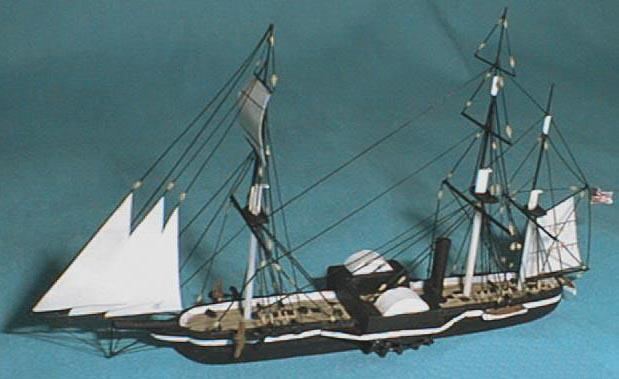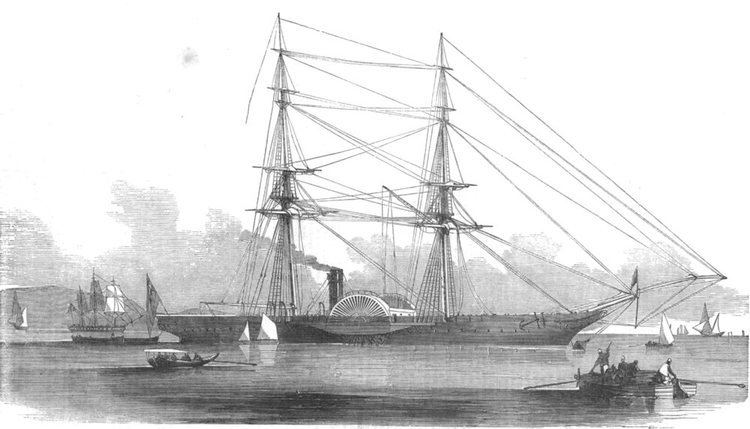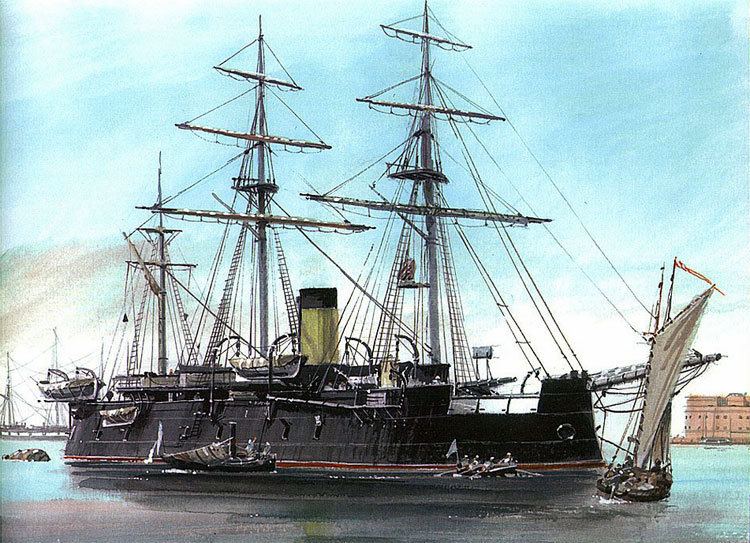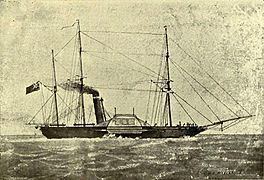 | ||
Steam frigates, also known as screw frigates, and the smaller steam corvettes and steam sloops were steam-powered warships. The first such ships were steam-powered versions of the traditional frigates, corvettes and sloops.
Contents

Evolution

The first vessel that can be considered a steam warship was the Demologos, which was launched in 1815 for the United States Navy.

From the early 1820s, the British Navy began building a number of small steam warships, and by the 1830s many navies were experimenting with steam-powered warships. This first generation of steam warships, termed 'paddle warships' (in the categories of frigate, sloop, gunvessel or other), used paddlewheels mounted on either the sides or in the center. The ships were equipped with large guns, generally mounted on one deck (although some larger paddle warships carried guns on two deck levels). Paddlewheels were proven in a number of Admiralty trials to be less efficient than the propeller or 'screw', and more vulnerable to damage, and from the late 1840s onwards navies began to build screw-driven steam warships.

These warships more closely resembled the traditional sailing warship, and were built with steam engines and screw propeller for propulsion. The ships retained a full sail-plan however, due less to conservatism than to lack of coaling supplies around the globe, the last being an especially important consideration for frigates, which often operated independently on the far side of the world. These 'screw frigates', built first of wood and later of iron, continued to perform the traditional role of the frigate until late in the 19th century. France and the United Kingdom were the only two countries to develop fleets of wooden steam screw battleships, and both navies built numbers of screw frigates.

From 1859, armour was added to ships based on existing frigate and ship of the line designs. The additional weight of the armour on these first ironclad warships meant that they could have only one gun deck, and they were technically frigates, even though they were more powerful than existing ships-of-the-line and occupied the same strategic role. The phrase 'armoured frigate' remained in use for some time to denote a sail-equipped, broadside-firing type of ironclad. For a time, they were the most powerful type of vessel afloat.

Towards the end of the 19th century, the term 'frigate' fell out of use. Armoured vessels were designated as either 'battleships' or 'armoured cruisers', while unarmoured vessels including frigates and sloops were classified as 'unprotected cruisers'.
Survivors
The only surviving screw frigate is the Danish Jylland.
